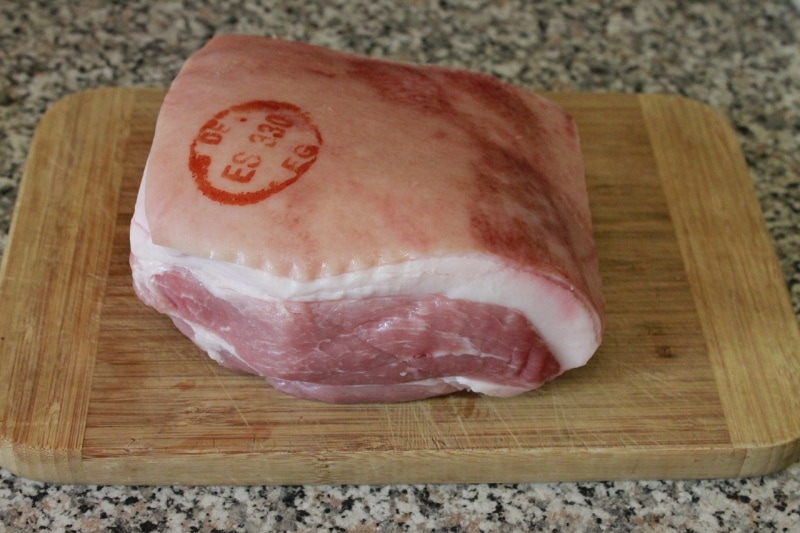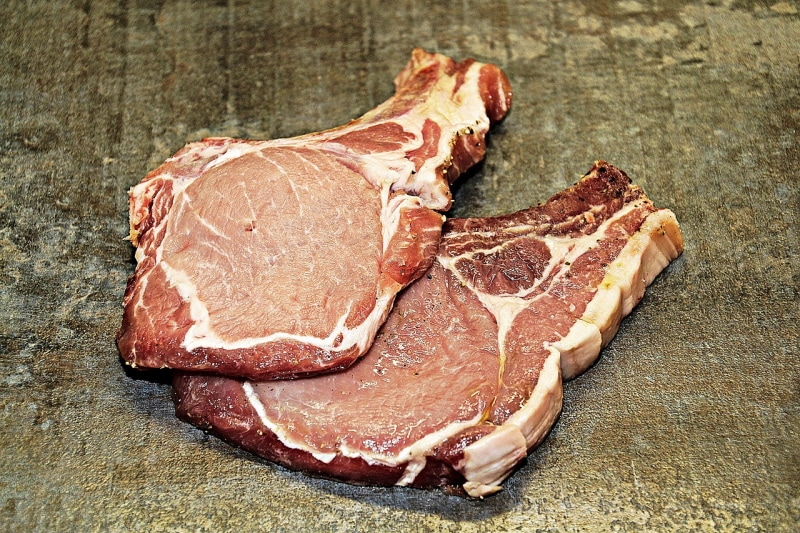How Much Water Is Used to Make a Pound of Pork? (2025 Guide)
-
Pete Ortiz
- Last updated:

It is easy to think about water conservation when washing dishes or taking a shower, but our impact goes further than most people realize. In particular, food requires a remarkable amount of water. And if you enjoy meat, you will be amazed at how much goes into your daily meals. For instance, it takes 576 gallons of water to produce one pound of pork, which is still surprisingly far from being the most wasteful food product.
Why Does It Take So Much Water to Produce a Pound of Pork?
Agriculture is responsible for 92% of the global water footprint, and 30% of that water footprint comes from meat production. While it is not as resource-intensive as beef, pork demands more water than most agricultural products.
Every pound of edible pork in the grocery store takes roughly 576 gallons of water to produce. The water footprint accounts for the water that goes into feeding and caring for the pig when it’s alive and the water required for processing during and after slaughter.
- Water usage in the production of food and water for the pigs
- Water for wetting food in wet feed systems
- Service water that bathes and cools the pigs
- Water for facility and equipment washing and movement of manure
Pork’s Water Footprint from Food and Water

The typical market pig weighs 200–300 pounds and lives for 5.5–6 months. During this time, it eats an increasing amount of feed. Young pigs start at daily quantities of 0.5–1 pound of feed. At their final weight of around 250 pounds, pigs consume 5–7 pounds of feed daily. Overall, a pig will eat approximately 600–700 pounds of food during its lifetime.
Pigs are efficient feeders capable of processing nearly anything, including garbage, into energy. Commercially, pig feed consists primarily of corn (around 60%) and soybeans (~13%). Nutritional additives and other feed like wheat and sorghum make up the remainder.
The water footprint of corn is around 127 gallons of water per pound of the finished product. For a 250-pound pig fed 600 pounds of food in its lifetime, roughly 360 pounds of feed could conceivably consist of corn. In this instance, it would take 183 gallons of water to produce the corn that goes into one pound of pork.
It’s a rough example, but with the sheer amount of water that goes into only 2/3 of its food, it’s easy to see why pork requires so much water. And the feed isn’t even the most water-heavy aspect of a pig’s nutrition.
Unsurprisingly, much of pork’s water footprint comes from the water that pigs drink. Newborn pigs start at about 0.5–1 gallon of water per day, and by the time they reach their full size, they consume 1.5–2 gallons. Between drinking water and food, each pound of pork already accounts for several hundred gallons of water.
Pork’s Relative Water Footprint
| How Much Water Does It Take to Produce? | |
| Cup of coffee | 37 gallons |
| Potatoes (1pound) | 34 gallons |
| Loaf of bread | 240 gallons |
| Chicken (1 pound) | 468 gallons |
| Pork (1 pound) | 576 gallons |
| Beef (1 pound) | 1,799 gallons |
Compared to beef, pork production requires much less water. Pigs only live about 6 months before going to slaughter, whereas beef cows can live up to 3 years, giving them much more time to feed.
Cows also consist of more bone and inedible mass, increasing the amount of water per pound of processed beef. In general, chicken and pork have much better feed conversion efficiencies than beef, meaning it takes less food to create edible products.
From an environmental impact perspective, that doesn’t mean that beef is more wasteful than pork. The pork industry generally uses more blue and gray water for pig feed. Unlike green water (rainwater that naturally waters crops), blue and gray water (i.e., irrigation and wastewater) come out of the natural water cycle. Limiting the amount of blue and gray water in agriculture is a crucial goal for environmental groups.
Pork production relies heavily on concentrates, which account for nearly all the feed in industrial systems. By comparison, less than 20% of feed in beef industrial systems comes from concentrates.
Concentrates use roughly 61 times the amount of gray water and 43 times the amount of blue water that roughages require. Despite needing less feed, the concentrate-heavy diet means that pigs, whether in a grazing, mixed, or industrial setting, use more gray and blue water than cattle.
Overall, beef’s water footprint consists of 3% gray water and 4% blue water, while pork’s is 10% gray water and 8% blue water. Raw numbers show a massive gap between the water demands of pork and beef. But in terms of the unnatural use of water, the two are relatively similar.

Final Thoughts
The water that goes into everything on our dinner plate certainly provides food for thought. A pound of pork may not seem like much, but the amount of water that goes into producing it is staggering, and the inefficient use of that water is disheartening. While the pork industry has improved operational efficiency, it still pulls tons of water from the natural cycle. As we focus more on sustainability, our consumption habits can play a significant role in managing our environmental impact.
Featured Image Credit: kalhh, Pixabay
Contents



